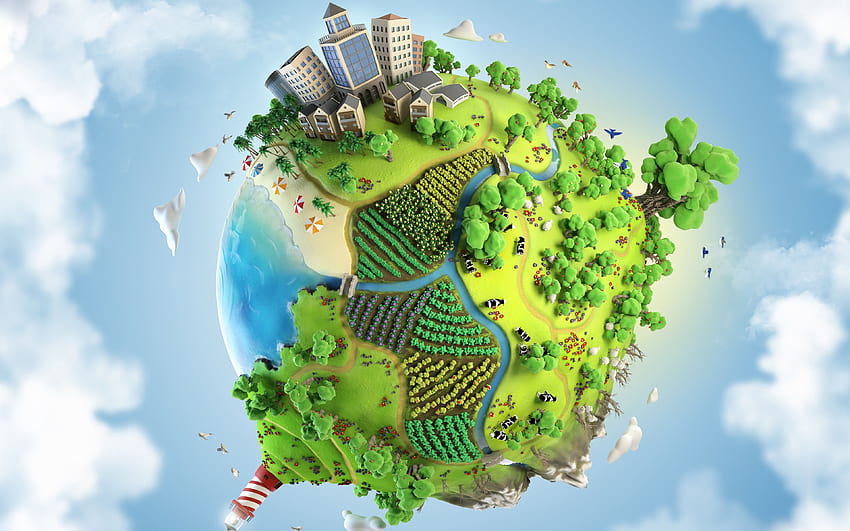Picture yourself leaving footprints in the sand as you stroll along a pristine beach. Now, imagine that with each step you take in life, you’re leaving a different kind of mark – a carbon footprint. This concept might seem abstract, maybe even daunting, but understanding it is the first step in your journey towards environmental sustainability.
In this blog post, we’ll unmask the mystery of carbon footprints, shed light on how they’re calculated, and introduce you to Tanbii – an innovative Web5 application that allows you to track and reduce your footprint in an engaging way.
By the end of this article, you’ll be equipped with the knowledge to transform eco-friendly actions into tangible benefits and be a champion for a greener future. Ready to embark on this exciting adventure? Let’s get started finding ways yo reduce your carbon footprint.
What is a Carbon Footprint?

At its core, a carbon footprint represents the total amount of greenhouse gases, particularly carbon dioxide (CO2), emitted into the atmosphere due to human activities. Imagine you’re walking on a sandy beach, leaving footprints as you go. Similarly, as you go about your life, you’re also leaving a ‘footprint’ on the environment – a carbon footprint.
But what does it actually mean? Our lifestyles are responsible for an estimated two thirds of global emissions, according to the 2020 Emissions Gap Report from the UN Environmental Programme. Well, your carbon footprint encompasses more than just the CO2 emissions that come directly from you, like the exhaust fumes from your car. It also includes indirect emissions, such as the CO2 produced to generate the electricity that powers your home, or to manufacture, transport, and dispose of the products you consume. From the clothes you wear, the food you eat, to the device you’re reading this on, they all contribute to your carbon footprint. In other words, it’s a measure of your environmental impact on the planet.
Understanding our carbon footprint is crucial because it provides a quantifiable way to comprehend how our personal lifestyle choices contribute to global warming and climate change. It helps us identify areas where we can reduce our environmental impact and lead a more sustainable lifestyle.
Digging Deeper into Carbon Footprints

Now, let’s take a closer look at some specifics. Every activity, be it individual, corporate, or governmental, has potential for emitting CO2 and other greenhouse gases like methane (CH4) and nitrous oxide (N2O). These gases trap heat in our atmosphere, leading to a rise in global temperatures, a phenomenon known as the greenhouse effect.
Our carbon footprints are comprised of two parts: primary and secondary footprints. The primary footprint is the direct emissions of CO2 from our activities, such as driving a car or heating a home. The secondary footprint includes indirect CO2 emissions from the whole lifecycle of products we use, from their manufacture to their eventual breakdown.
To truly understand our carbon footprint, it’s crucial to grasp that it’s not just about CO2. According to the IMF, other greenhouse gases like methane, produced by natural gas and livestock, or nitrous oxide, emitted from agricultural and industrial activities and during combustion of fossil fuels and biomass, are also part of our carbon footprint. Though less prevalent, these gases are far more potent than CO2, with methane being 25 times and nitrous oxide being nearly 300 times more effective at trapping heat in the atmosphere.
The Impact of Your Carbon Footprint

Acknowledging our carbon footprint is an essential first step in the fight against climate change. While global efforts and systemic changes are crucial, our individual actions, lifestyles, and consumption habits also play a significant role.
Reducing our carbon footprint has a profound impact on our planet. Lower carbon emissions mean fewer greenhouse gases in the atmosphere, which in turn leads to less global warming. It’s a straightforward equation – the higher our carbon footprint, the greater our contribution to climate change.
But the effects go beyond global warming. A lower carbon footprint also means cleaner air, as CO2 emissions from fossil fuel combustion lead to air pollution, which is detrimental to human health. Moreover, it means cleaner water bodies, as CO2 emissions can lead to ocean acidification, threatening marine life. It helps conserve natural resources, as a large part of our carbon footprint comes from exploiting these resources. Lastly, it contributes to protecting our biodiversity and ecosystems, as climate change is a major driver of habitat loss and species extinction.
To put it simply, reducing our carbon footprint is not just about saving the environment; it’s also about preserving our health, our resources, and the rich biodiversity of our planet.
The Long-Term Benefits of Reducing Carbon Footprints

Reducing our carbon footprint isn’t just a one-time thing; it has long-term benefits that can span generations. It’s about creating a sustainable world for us and for future generations.
Lowering global temperatures can prevent or at least mitigate some of the dire impacts of climate change, such as extreme weather events, sea-level rise, and biodiversity loss. By ensuring cleaner air and water, we’re also preserving human health, reducing the incidence of respiratory ailments and waterborne diseases. Conserving our natural resources means they will be available for longer, benefiting not just us, but also future generations. And preserving our biodiversity ensures the continuation of vital ecosystem services that our survival depends on.
Understanding these impacts and benefits is a critical step towards motivating change. We need to realize that our actions today will shape the world of tomorrow.
How Can Tanbii Help You Track and Reduce Your Carbon Footprint?

Understanding the concept of carbon footprints is vital, but knowledge without action is futile. And that’s where Tanbii steps in. Tanbii, our innovative Web5 application, gamifies carbon reduction efforts. By accurately tracking, calculating, and rewarding users for reducing their personal carbon emissions, Tanbii brings a fresh and exciting approach to environmental sustainability.
Using Tanbii, you can easily monitor the carbon footprint of your daily activities, from your morning commute to your last meal of the day. What’s more, Tanbii’s extensive network of partnering brands and reforestation projects lets you earn rewards for your carbon reduction efforts, turning your eco-friendly actions into tangible benefits.
In the face of climate change, Tanbii empowers you to make a difference. By bridging the real and virtual worlds, Tanbii makes the transition to a sustainable lifestyle an engaging and rewarding experience.
The journey to a greener future begins with understanding and reducing our carbon footprint. By recognizing how our lifestyle choices contribute to climate change, we can make more eco-friendly choices and reduce our environmental impact. Innovations like Tanbii not only make this process accessible and enjoyable but also foster a sense of community and shared responsibility.
Together, let’s embark on a rewarding journey towards sustainability. Let’s use tools like Tanbii to create a thriving ecosystem where eco-friendly actions are rewarded, transforming our world into a greener, better place. In the face of climate change, every action truly counts. Remember: Reduce your carbon, increase your footprint in the journey towards a sustainable world.




